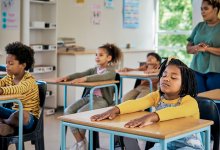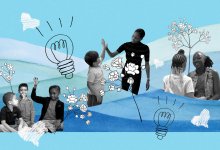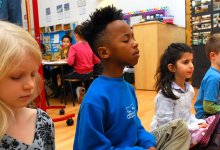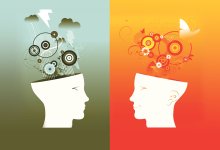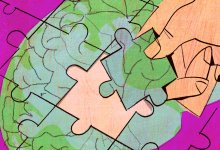Mindfulness
Discover how students and educators can reduce stress, better regulate emotions, and focus more fully on teaching and learning by tuning into their inner selves.
Introducing Yoga in Preschool
Teachers can share the benefits of yoga with young learners to help them be mindful of their breath, body, mind, and heart.2.7kYour content has been saved!
Go to My Saved Content.Teaching Young Learners Self-Calming Skills
To help early elementary students manage big emotions, try breathing exercises and sharing how you deal with overpowering feelings.Your content has been saved!
Go to My Saved Content.Creating Moments of Calm in the Weeks Before Winter Break
When engagement wanes before a long vacation, teachers can introduce mindful breaks to help students reset and refocus.7.9kYour content has been saved!
Go to My Saved Content.Creating a Dedicated Space for Reflection
Providing students with a quiet spot where they can calm themselves in times of stress helps them develop self-regulation.599.2kYour content has been saved!
Go to My Saved Content.More Than a Check-In: Maslow Before Bloom Throughout the Day
While checking in on students’ well-being at the beginning of class is important, tending to it throughout the day helps students flourish—socially, emotionally, and academically.302.3kYour content has been saved!
Go to My Saved Content.How to Maslow Before Bloom, All Day Long
Morning meetings are a good place to start, but what you really need is a toolkit of strategies to meet your students’ social and emotional needs all day long.292.2kYour content has been saved!
Go to My Saved Content.Weekly Circles for Students and Faculty
See what happens when students and faculty participate in regular meetings to build trust and promote deeper learning.400.6kYour content has been saved!
Go to My Saved Content.Counting Down to Restore Calm in the Classroom
This simple mindfulness activity can help reset your brain when things get chaotic during the school day.218kYour content has been saved!
Go to My Saved Content.When Teachers Experience Empathic Distress
Mindfulness and compassion are effective self-care strategies for teachers who work with students who routinely experience trauma.304.5kYour content has been saved!
Go to My Saved Content.Integrating SEL and Literacy
Get a peek at daily advisory meetings where students build both literacy and social and emotional learning skills in tight-knit groups.239kYour content has been saved!
Go to My Saved Content.8 Activities for Students (and Teachers) to Create a Mindful Classroom
Everyone in the classroom benefits when there are opportunities throughout the day to reflect and prepare for learning.121.8kYour content has been saved!
Go to My Saved Content.7 Ways to Calm a Young Brain in Trauma
How can we help elementary students who have been scarred by tragedy become more receptive to learning?264.1kYour content has been saved!
Go to My Saved Content.Rock On! How I Taught Focus to a Class That Wouldn’t Sit Still
How an art project on making rock sculptures helped a class of first graders settle down and find their focus.249kYour content has been saved!
Go to My Saved Content.The Neuroscience Behind Productive Struggle
Challenging tasks spur the production of myelin, a substance that increases the strength of brain signals. Here are four strategies to incorporate productive struggle into your lessons.151.1kYour content has been saved!
Go to My Saved Content.3 Ways to Make Gratitude a Habit in Your Classroom
When teachers are intentional about building a culture of appreciation and acknowledgment, the whole classroom community benefits.78.1kYour content has been saved!
Go to My Saved Content.

